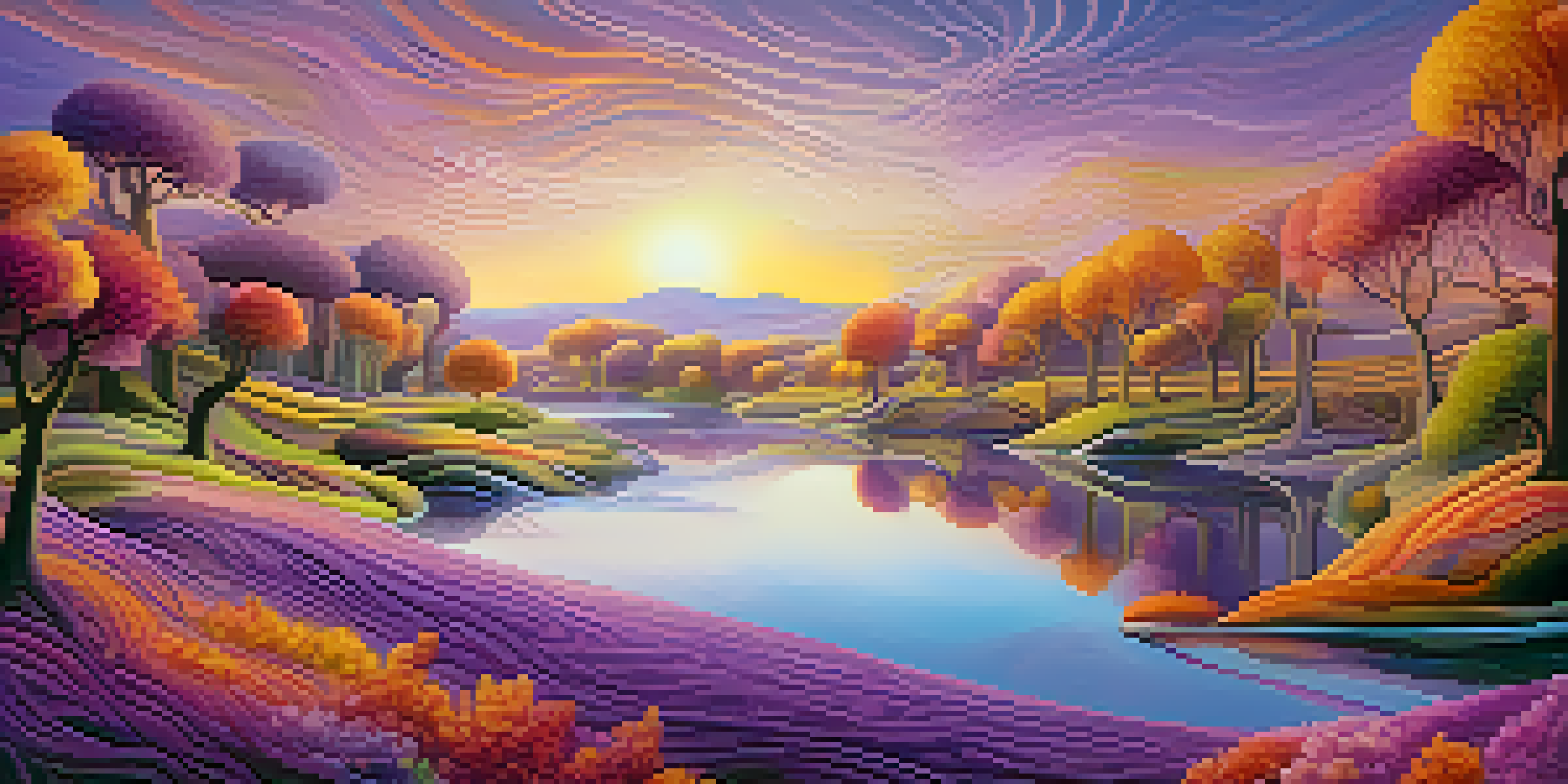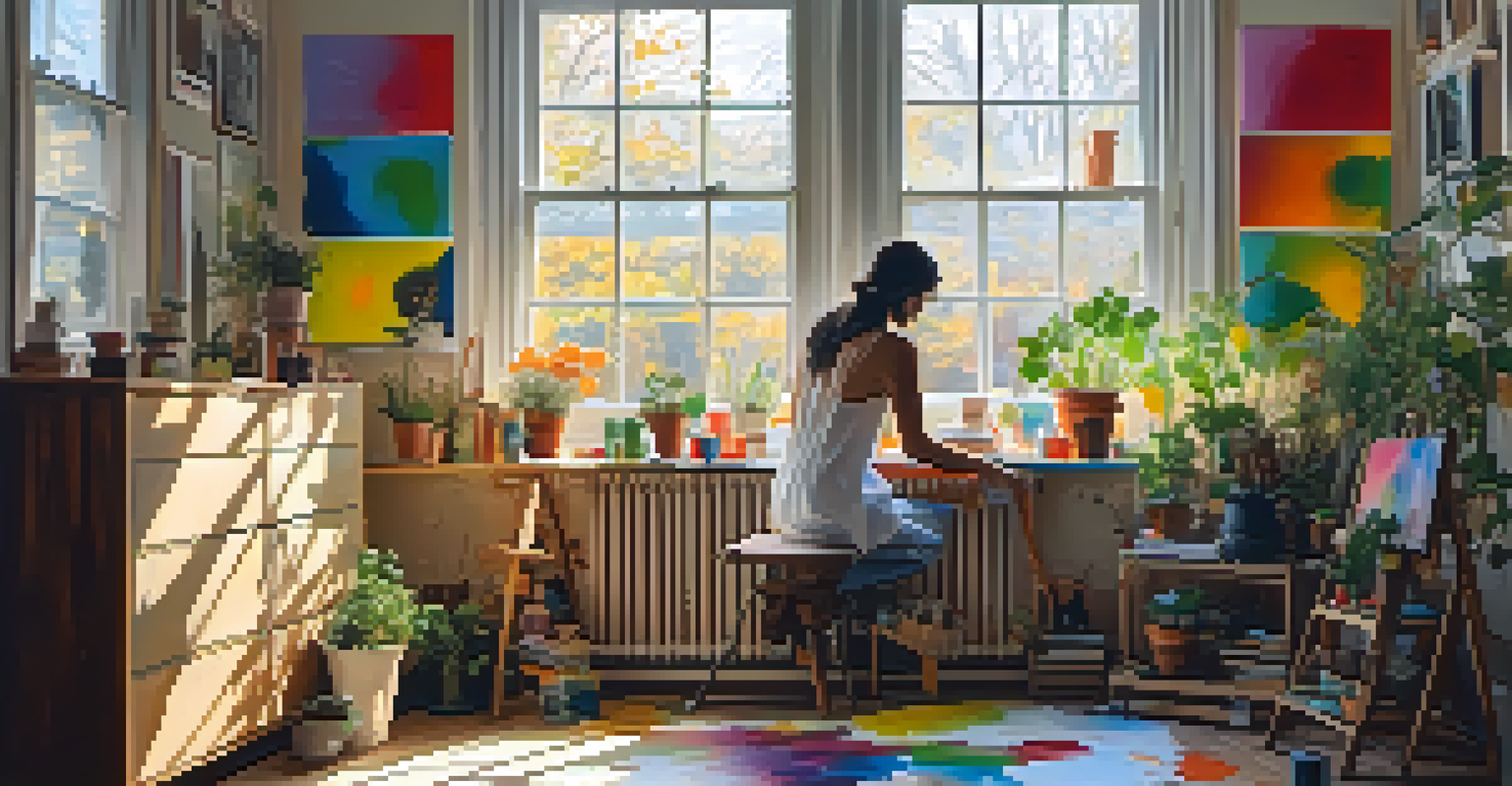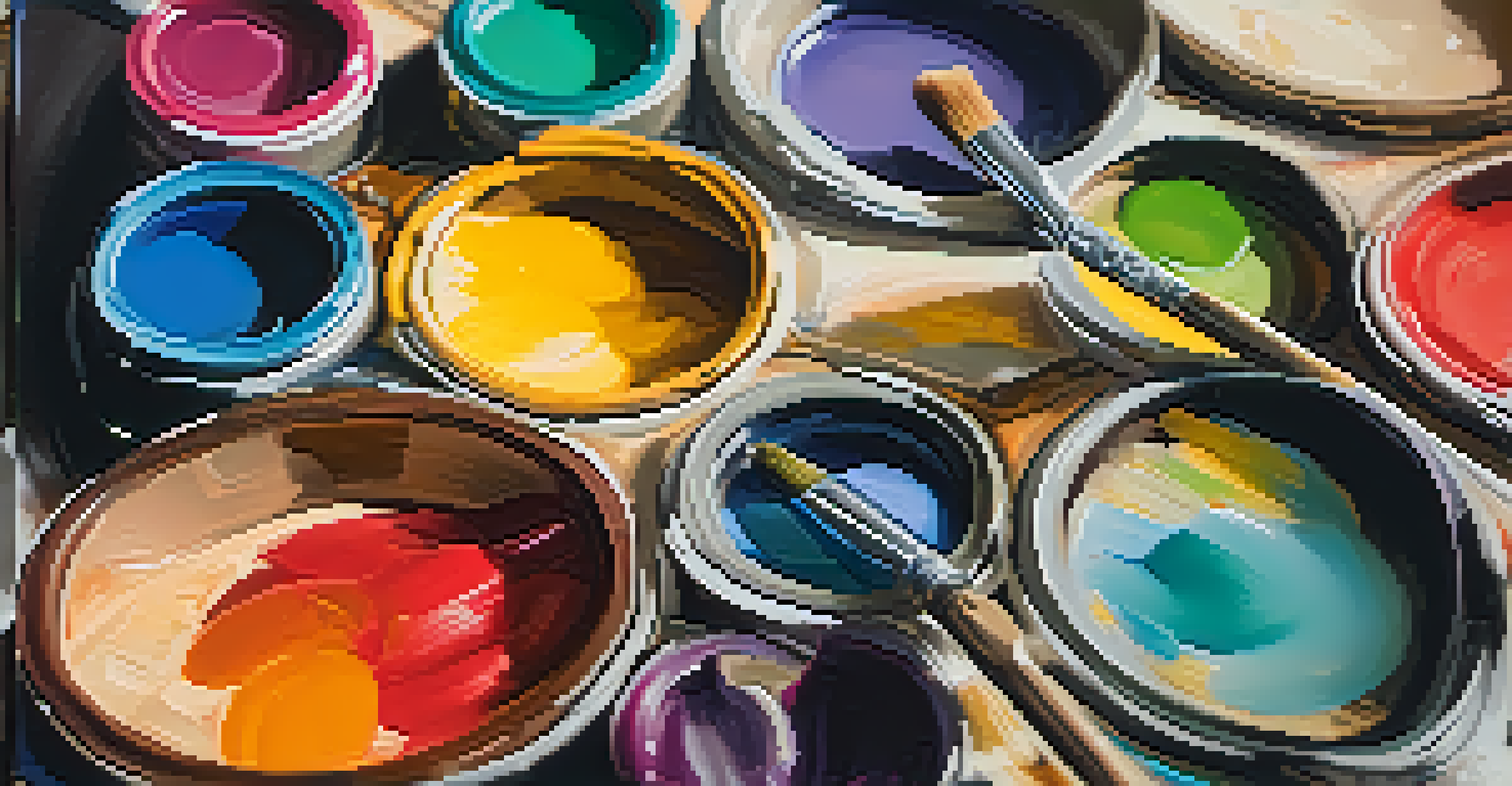Entheogenic Journeys: Artists Share Their Transformative Stories

Understanding Entheogens: A Gateway to Transformation
Entheogens are psychoactive substances that have been used for centuries in various cultures for spiritual and transformative experiences. They can open up new realms of consciousness, helping individuals connect with deeper aspects of themselves and the universe. For many artists, these experiences serve as a catalyst for creativity, allowing them to explore themes that resonate on both personal and universal levels.
Psychedelics can help us see the interconnectedness of all things, which can profoundly affect our creativity and artistic expression.
Artists often describe their journeys with entheogens as profound and life-changing, offering insights that can reshape their artistic vision. This altered state of consciousness can lead to a surge of inspiration, where colors, sounds, and ideas flow in ways that seem almost magical. Such experiences can also help artists confront personal challenges, unlocking emotional barriers that may have hindered their creative expression.
By understanding entheogens and their potential impact on creativity, we can appreciate the depth of the stories artists share. These narratives not only highlight the transformative power of these substances but also invite us to consider how altered states of consciousness can influence art, culture, and personal growth.
Personal Stories: Artists Reflect on Their Journeys
Many artists have shared their personal journeys with entheogens, detailing how these experiences have shaped their lives and work. For instance, one painter described a vivid vision during a psychedelic experience that inspired a whole series of artworks. This connection between experience and creativity emphasizes how powerful these journeys can be in sparking new ideas and artistic directions.

In another case, a musician recounted how a transformative experience with an entheogen helped him overcome writer’s block. He found that the music flowed effortlessly, allowing him to explore emotions he had long suppressed. Such stories speak to the healing potential of entheogens, as they can help artists tap into their innermost feelings and express them through their craft.
Entheogens Inspire Artistic Creativity
Many artists experience profound creativity and personal transformation through their journeys with entheogens, leading to unique expressions in their work.
These personal narratives not only serve as inspiration for fellow artists but also foster a sense of community among those who have ventured into similar territories. By sharing their stories, artists encourage open conversations about the role of entheogens in the creative process and the importance of self-exploration.
Art as a Reflection of the Entheogenic Experience
The art created under the influence of entheogens often reflects the unique and surreal nature of these experiences. Vivid colors, abstract forms, and intricate patterns may emerge as artists attempt to translate their altered perceptions onto canvas or into sound. This visual and auditory representation can provide insight into the complexities of the human psyche and the interconnectedness of all things.
Art is a reflection of the inner self. When we explore altered states of consciousness, we uncover parts of ourselves that can transform our creative work.
For example, an artist may depict a journey through a vibrant landscape filled with symbolic elements that represent their emotional state or spiritual awakening. This method of expression can resonate with audiences, inviting them to embark on their own interpretive journey as they engage with the artwork. The result is a shared experience that transcends traditional boundaries of communication.
By examining how entheogenic experiences influence art, we can appreciate the potential for these substances to expand our understanding of creativity. Through their unique perspectives, artists can challenge our perceptions and encourage us to see the world in new and profound ways.
Cultural Perspectives: Historical Context of Entheogens
Entheogens have been part of various cultural rituals and practices throughout history, often viewed as sacred tools for personal and communal transformation. Indigenous cultures, in particular, have long utilized these substances in ceremonies aimed at healing, divination, and spiritual connection. Understanding this historical context can deepen our appreciation for the modern artists who draw on these traditions in their work.
For instance, the use of peyote in Native American ceremonies exemplifies how entheogens can facilitate a connection to the divine. Artists inspired by these practices often incorporate elements of their cultural heritage into their creations, honoring the wisdom of their ancestors while also exploring their own identities. This blend of tradition and personal expression creates a rich tapestry of art that speaks to both the past and present.
Cultural Roots of Entheogenic Use
Entheogens have deep historical significance in various cultures, often used in rituals for healing and spiritual connection, influencing modern artistic practices.
By acknowledging the cultural significance of entheogens, we can foster a greater understanding of how these substances have shaped artistic movements across time. This exploration encourages a dialogue about the intersection of culture, spirituality, and creativity, highlighting the importance of respecting these traditions.
The Science Behind Entheogens: Brain and Creativity
Scientific research into the effects of entheogens on the brain reveals fascinating insights into their potential to enhance creativity. Studies suggest that these substances can promote neuroplasticity, allowing the brain to form new connections and pathways. This process may lead to heightened inspiration and novel ideas, as well as a greater ability to think outside the box.
For example, when under the influence of certain entheogens, individuals often report experiencing a sense of interconnectedness with their thoughts and the world around them. This feeling can lead to innovative problem-solving and a broader perspective on artistic challenges. Understanding the science behind these experiences can validate the transformative power of entheogens in the creative process.
As we continue to explore the relationship between neuroscience and art, we may uncover even more ways in which entheogens can benefit creative individuals. This growing body of research not only supports the stories shared by artists but also opens the door for a deeper exploration of human consciousness and creativity.
Challenges and Controversies: Navigating the Landscape
While entheogens offer transformative experiences, they also come with challenges and controversies. The legal status of these substances varies widely across the globe, and many artists face stigma or misunderstanding when discussing their use. Navigating this landscape can be daunting, as artists balance their personal journeys with societal perceptions.
Moreover, the potential for misuse or harmful experiences cannot be overlooked. It's crucial for individuals to approach entheogens with respect, intention, and awareness of their mental health. By promoting responsible use and education, the artistic community can work towards creating a safer environment for exploration.
Science Links Entheogens and Innovation
Research indicates that entheogens can enhance neuroplasticity and creativity, allowing artists to form new connections and perspectives in their work.
Despite these challenges, many artists continue to advocate for the therapeutic potential of entheogens. By sharing their stories and experiences, they contribute to a growing movement that seeks to destigmatize these substances and highlight their positive impact on creativity and personal growth.
The Future of Entheogenic Art: Trends and Insights
As society becomes more open to discussing the use of entheogens, we can expect to see emerging trends in the art world. Artists are increasingly incorporating their experiences into various mediums, from painting to performance art, creating spaces for dialogue around consciousness and self-exploration. This shift may lead to a renaissance of creativity that challenges traditional norms and encourages new ways of thinking.
Furthermore, the rise of wellness culture and interest in mental health may pave the way for greater acceptance of entheogens as tools for personal development. Workshops, retreats, and artist residencies centered around these experiences are becoming more common, providing opportunities for artists to explore their creativity in supportive environments. This evolution could foster a community that values exploration and healing through art.

The future of entheogenic art promises to be rich with innovation and self-discovery. As more artists share their journeys, we can anticipate a vibrant dialogue that highlights the transformative power of creativity and the importance of understanding our inner landscapes.